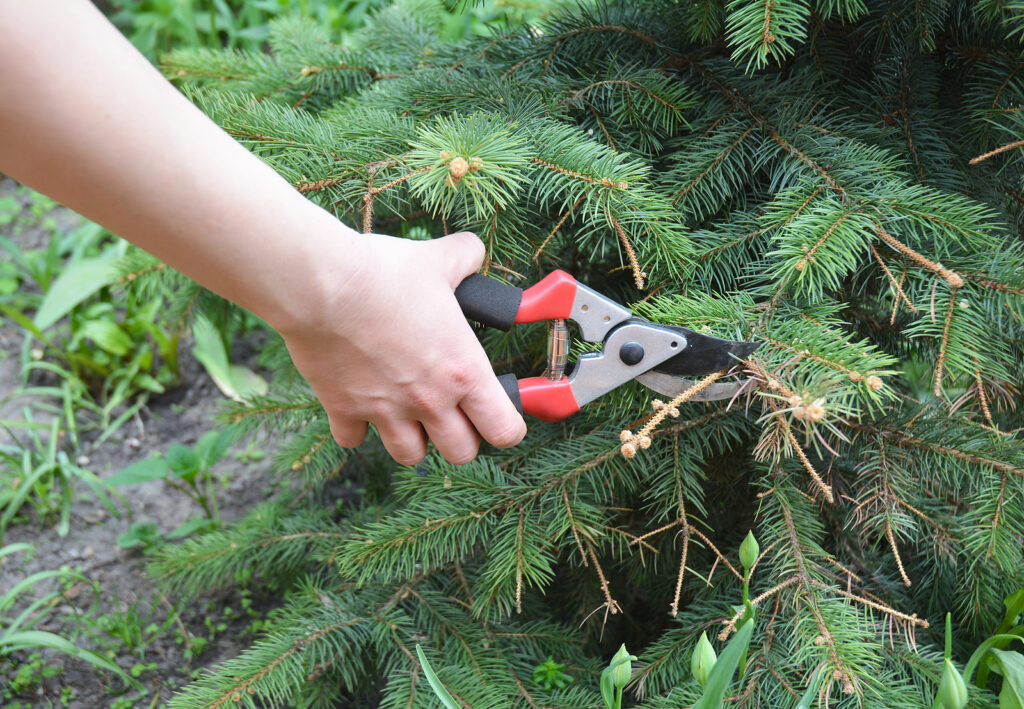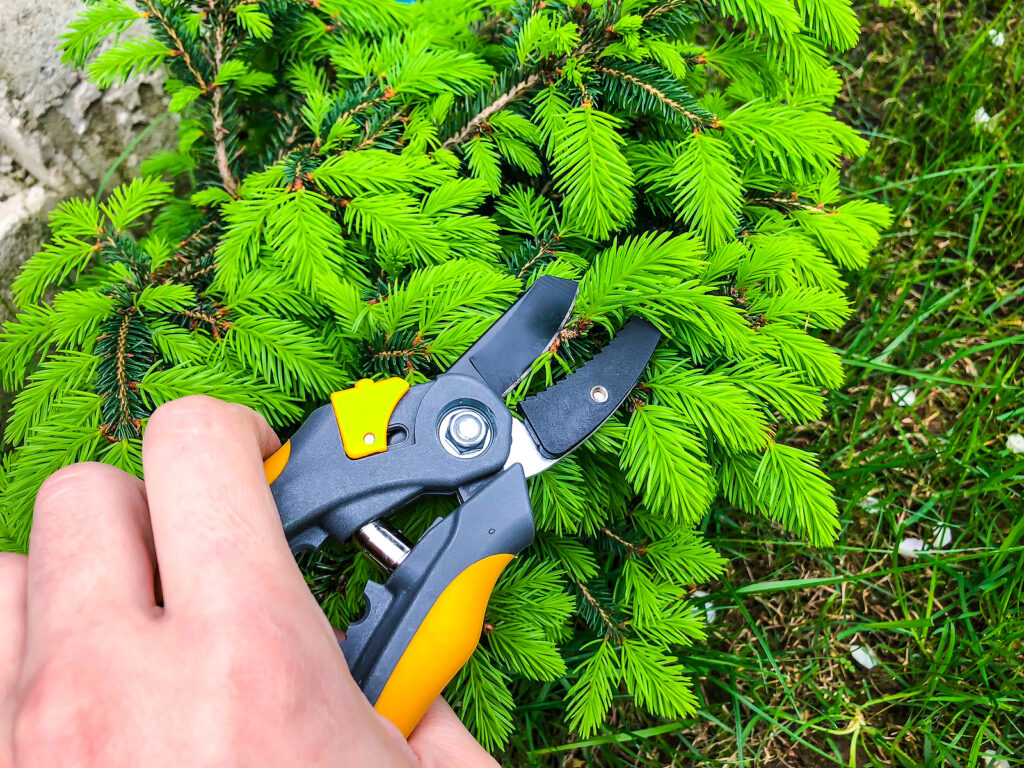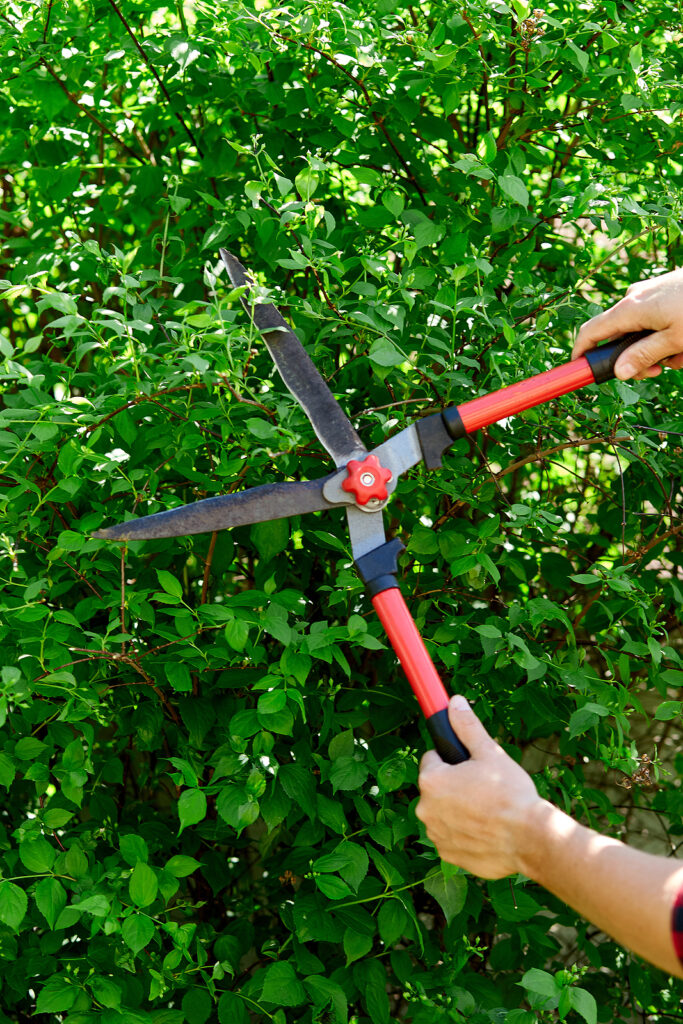Evergreen shrubs and trees usually require little other pruning beyond the removal of dead, diseased, or injured branches unless they are being trained or shaped. That means evergreens can be lightly pruned to enhance their natural form or they can be heavily pruned to an unnatural form—usually to the form of a hedge or topiary.
If grown for their natural form and beauty evergreens are low maintenance; they seldom need pruning. If shaped or trained, evergreen need frequent attention.
Evergreens are plants that hold their foliage from season to season. They are green throughout the year.
Evergreens can be divided into two classes—broad-leaved evergreens such as rhododendrons and boxwoods and conifers with needle- or scale-like leaves such as yews and junipers.
Ways to prune evergreen plants
There are three ways to prune evergreens: selective pruning, pinching, and shearing. Evergreens shaped into hedges or topiaries are sheared. Evergreens grown for their natural form are selectively pruned and pinched. Here’s more on each of these pruning methods:

Selective pruning
Selective pruning means removing wayward branches to keep a shrub or tree neat while maintaining the plant’s natural form.
- Selectively prune needled evergreen trees or shrubs such as junipers in late winter or early spring; selectively prune broadleaved evergreens such as rhododendrons right after they bloom.
- A plant that has been selectively pruned will often not look as if it had been pruned at all. A few branches or shoots are pruned. To selectively prune, follow the length of a new, unwieldy, green shoot to older wood and make the cut; the young shoot is removed and little or no new growth will follow since the cut was made in older wood.

Pinching
Pinching is a term used to describe the removal of soft, new growth at the tip of a young shoot. Pinching is commonly done with the thumb and forefinger. It is the least intrusive and often least noticed form of pruning.
- Pinch plants at any time there is new growth, usually in the early part of the season. Pinch off tip buds and new growth before shoots start to harden and become woody.
- Pinching can also be done with a hand pruner. Simply clip off the new growth.
- Frequent pinching can radically control a plant’s growth; bonsai plants are pinched to shape.

Shearing
Shearing creates a tightly clipped, smooth formal look to shrubs. Shears are pruners with long blades; shearing cuts are not selective; they are sweeping. Shearing is a way to shape the outer surface of a plant.
- Plants suitable for shearing grow new twigs and leaves from each cut; this makes the foliage thick and dense. Boxwoods and myrtles are plants that are often sheared.
- Because shearing promotes new growth, it is important to shear a plant regularly to maintain its shape. Frequent shearing will keep the plant neatly trimmed.
When to prune evergreen plants
As a general rule: prune needled evergreen shrubs and trees in early spring; prune broad-leaved evergreens right after they bloom.
- Prune needled evergreens is in spring just as growth is starting. Rampant shoots that appear during the growing season may be pinched back or pruned when noticed. Winter pruning of evergreens should generally be avoided; cuts in winter—apart from dead or damaged wood–can stress the plant because moisture is drawn from the plant through the cuts.
- Flowering broadleaf evergreens are best pruned right after they bloom. Many broadleaf evergreens such as rhododendrons flower on old wood; so it’s best to let the plant bloom before pruning. When pruned after blooming, the flowering evergreen will then have a year to mature wood from which it can set blooms the next season.
Also of interest:















